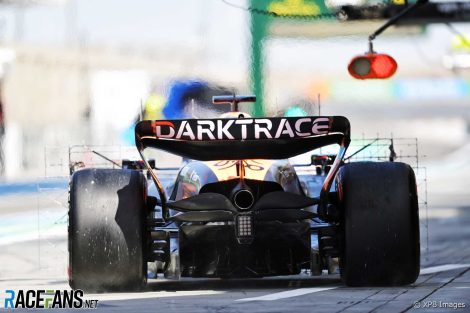McLaren may have started this season at the bottom of the constructors’ standings, but they already know what their major problems are for 2023 and believe they already have comprehensive solutions lined up.
For the second season in succession, the team suffered a challenging opening round in Bahrain, with rookie Oscar Piastri eliminated from Q1 and then lasting just 13 laps before being pulled into the garage to retire with an electrical problem. Meanwhile, team mate Lando Norris finished the race, but was the last car running, two laps down in 17th after a pneumatic leak led to him pitting six times throughout the race to fill up with air.
McLaren team principal Andrea Stella and technical director James Key spoke during the Bahrain Grand Prix weekend about why, despite starting the season off the pace and suffering reliability problems with the new MCL60, there remains a positive mood at McLaren in the early phase of the 2023 season.
The punishing rule change realised a little too late
Last summer, the FIA decided to tackle the porpoising problem impacting several Formula 1 teams by raising the minimum floor edge height for 2023. While a 25mm cut was originally planned, a compromise reduction of 15mm was eventually agreed with the teams, who set to work on adjusting the designs of their cars for the upcoming season around the new ride height.

Fast-forward to now and while McLaren have addressed some weaknesses of the MCL60’s predecessor – creating “a much better-balanced car” with “mechanical updates [that] seem to be working” too according to Key – the team admits the 15mm rule change proved a greater complication than they foresaw.
“[15mm] sounds very small, but these floors are huge and incredibly sensitive,” Key explained. “You look at how much downforce they generate, it’s massive. So when we did that on our car, it actually gave us a much bigger loss than anticipated. It seems to have affected different teams in different ways, and to a certain extent it seems to be related to the floor edge geometry that you were running at the time.”
McLaren’s floor design last year was broadly one of two differing philosophies among the teams. “There were two camps beginning to develop, one which we are in, one which probably the majority of teams are in,” Key explained.
The impact of the rules change forced McLaren to make a significant change late in the design process for its new…
Click Here to Read the Full Original Article at RaceFans…
